Pallet Changing Machine: What’s the Fastest Way to Replace Muddy Field Pallets?
Running a large-scale operation like a steel mill presents a constant battle. You have raw materials coming in from the field, often on dirty, damaged, or muddy pallets. These pallets can't enter your clean, automated production or warehousing areas. This creates a serious bottleneck. The contamination risks damaging your finished products, creating safety hazards on the floor, and slowing down your entire logistics chain. This seemingly small problem quietly eats away at your efficiency and profits every single day.
The fastest and most reliable way to replace muddy field pallets is by using a stationary, automated pallet changing machine, specifically a 180-degree pallet inverter. This equipment can securely clamp a full load, rotate it, and allow for the quick removal and replacement of the bottom pallet in a cycle time often under 60 seconds, minimizing manual labor and operational delays.
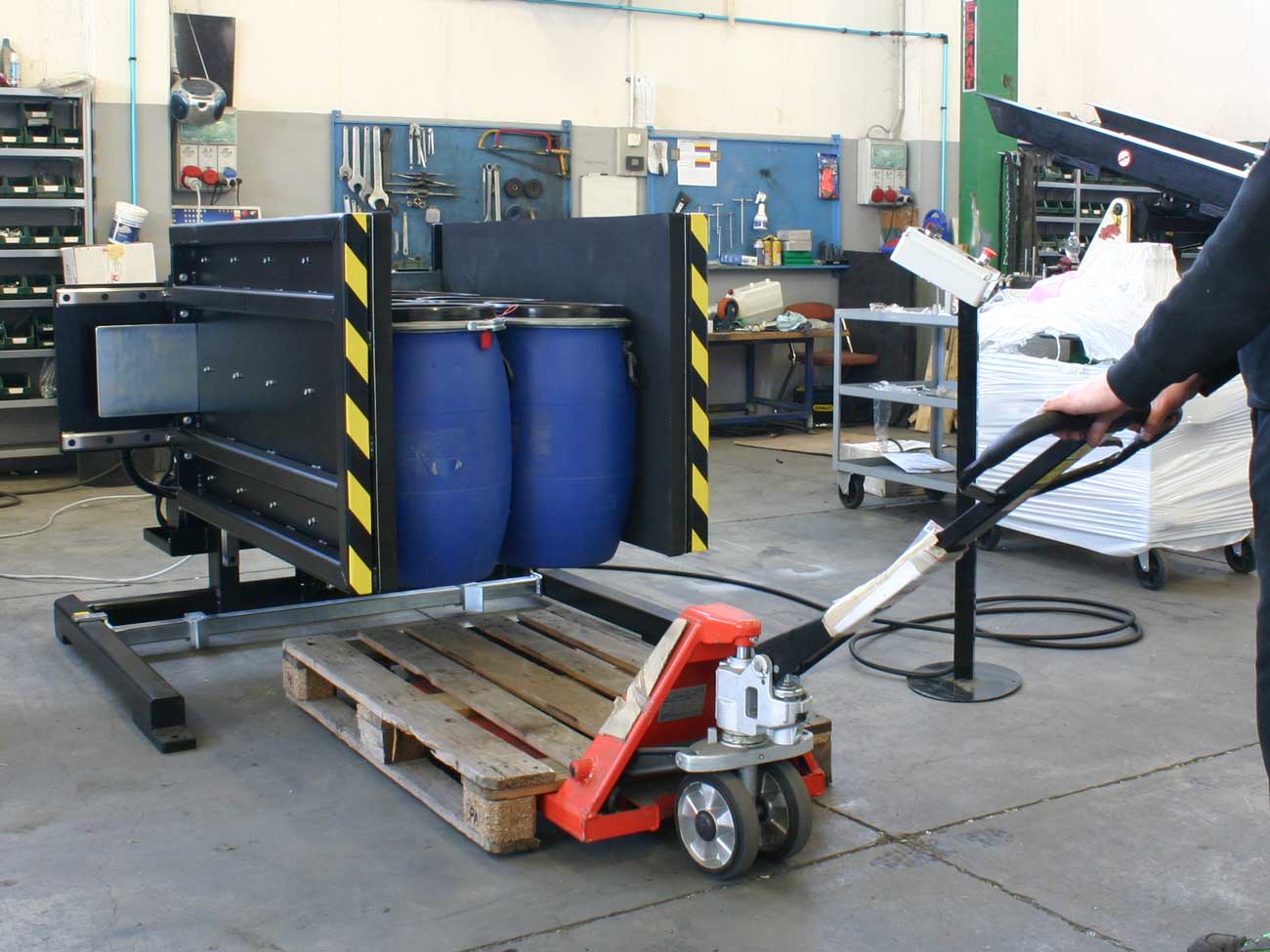
I've spent my entire career in the packing machine industry, first as an engineer and now as a factory owner. I understand the pressure you're under. You need every part of your operation to be lean, efficient, and profitable. A bottleneck at the receiving dock is more than an inconvenience; it's a direct threat to your production targets. That’s why choosing the right method to handle these pallets isn't just an operational detail—it's a strategic decision. Let's explore how to solve this challenge effectively.
How Can an Automated Pallet Changer Boost Your Steel Mill's Throughput?
You have production goals to meet. A 2-million-ton-per-year steel mill cannot afford to have its logistics chain held hostage by a slow, manual process. When loads of steel wire or other products arrive on field pallets, the process of manually re-stacking them onto clean, in-house pallets is a major drag on throughput. It’s labor-intensive, slow, and introduces risks of product damage and worker injury. You see the delays, and you know that time is money lost, directly impacting your plant's overall capacity utilization.
An automated pallet changer directly boosts your steel mill's throughput by replacing a slow, variable manual process with a fast, consistent, and predictable machine cycle. By automating the pallet exchange, you reduce the time each load spends in the receiving area from many minutes to less than one, eliminating a critical bottleneck and allowing your internal logistics to keep pace with production.
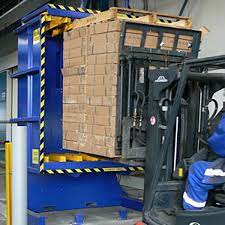
Deeper Dive: Quantifying the Throughput Gain
In my experience, factory managers often underestimate the cumulative impact of "small" delays. Let's break down the real difference between a manual process and an automated one. This is not just about speed; it's about creating a reliable, predictable flow that is essential for achieving the high capacity utilization you're targeting.
Manual vs. Automated: A Time and Cost Analysis
A manual pallet swap is more complex than it seems. It involves multiple steps, each taking time and introducing risk. An automated system condenses this into a single, fluid motion.
| Metric | Manual Pallet Exchange | Automated Pallet Changer | Impact |
|---|---|---|---|
| Labor Required | 2-3 workers | 1 operator (often the forklift driver) | 50-67% reduction in direct labor per task. |
| Average Time/Pallet | 10-15 minutes | < 1 minute | Over 90% reduction in cycle time. |
| Process Steps | 1. Find space. 2. Un-strap load. 3. Manually unstack product. 4. Remove old pallet. 5. Place new pallet. 6. Restack product. 7. Re-strap load. | 1. Load pallet into machine. 2. Press button. 3. Remove load with new pallet. | Drastically simplified process, fewer points of failure. |
| Consistency | Highly variable, depends on worker skill and fatigue. | Highly consistent, machine cycle is fixed. | Enables predictable scheduling and planning (key for MES). |
| Risk of Damage | High, from dropping or improper stacking. | Very low, load is securely clamped. | Reduces waste and protects profit margins. |
From Bottleneck to Free-Flow: The Effect on OEE
For a CEO like yourself, Javier, everything ties back to key performance indicators. The most relevant one here is Overall Equipment Effectiveness (OEE). OEE is a product of Availability, Performance, and Quality. A manual pallet exchange process hurts all three.
- Availability: When your packaging or internal transport lines are waiting for loads to be processed at receiving, that's downtime. This bottleneck reduces the availability of your downstream equipment.
- Performance: The slow pace of manual handling acts as a throttle on the entire system, preventing it from running at its designed speed.
- Quality: Manually handled goods are more likely to be damaged, leading to rejects and rework, which lowers your quality score.
By implementing an automated pallet changer, you directly attack these issues. The sub-60-second cycle time eliminates the availability losses. The speed allows your entire logistics chain to perform closer to its ideal rate. The secure clamping protects the product, boosting your quality metric. This is a clear and direct path toward your goal of 95% equipment effective running time. You transform a major bottleneck into a smooth, efficient part of your operation.
What Are the Key ROI Factors When Investing in a Pallet Inverter?
As a business owner, you scrutinize every major investment. A pallet inverter is no different. You need to see a clear path to a positive return on investment (ROI). It's not enough for a machine to be "better"; it must be better in a way that measurably improves your bottom line. You are constantly balancing capital expenditures against operational savings, and you need to be sure that new equipment will pay for itself and contribute to your goal of lowering overall operating costs.
The primary ROI factors for a pallet inverter are direct labor savings, reduction in product damage costs, elimination of expenses related to contamination, and increased throughput which translates to higher revenue capacity. These quantifiable savings often result in a payback period of less than 24 months for steel mill operations.
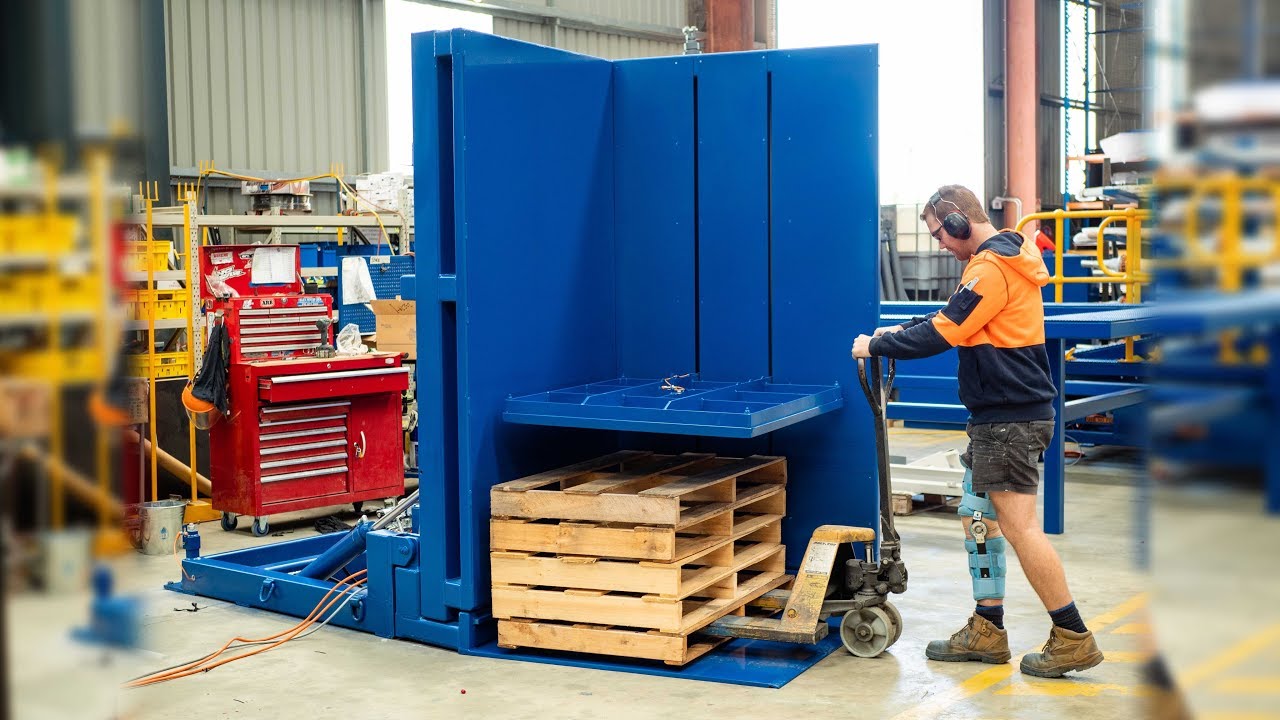
Deeper Dive: Building the Business Case
I've helped many clients build the business case for this type of equipment. The key is to look beyond the initial purchase price and analyze all the costs the machine will eliminate. We can separate the returns into two categories: tangible (the hard numbers) and intangible (the strategic benefits).
Tangible Returns: The Hard Numbers on Your P&L
These are the savings you can directly measure and report. Let's imagine a scenario for a steel mill running two shifts, five days a week, handling 50 incoming "dirty" pallets per day.
| Cost Category | Manual Process Annual Cost | Automated Process Annual Cost | Annual Savings |
|---|---|---|---|
| Labor Costs | 2 workers x 2 shifts x $25/hr (loaded) = $208,000 | 0.5 operator x 2 shifts x $25/hr (re-tasked) = $52,000 | $156,000 |
| Product Damage | 1% damage rate on loads worth $5,000 avg. = $65,000 | 0.1% damage rate = $6,500 | $58,500 |
| Contamination/Cleaning | Extra cleaning shifts, rejected loads = $20,000 | Minimal, as contamination is contained = $2,000 | $18,000 |
| Workplace Injury | 1 back injury claim average cost = $40,000 | Risk virtually eliminated = $0 | $40,000 (Variable but significant) |
| Total Estimated Savings | ~$272,500 |
This is a simplified model, but it shows how quickly the savings accumulate. An investment in a heavy-duty pallet inverter, which might be in the range of $50,000 to $100,000, can clearly pay for itself in well under a year. This directly supports your goal of reducing overall operating costs by 8% or more by targeting a major source of inefficiency.
Intangible Returns: The Strategic Value
These benefits are harder to quantify but are critically important for a forward-thinking leader.
- Improved Plant Hygiene and Safety: Creating a clear separation between "field" and "factory" zones prevents the spread of dirt and debris. This isn't just about looking clean; it reduces slip-and-fall hazards and improves air quality.
- Enhanced Process Control: Automation brings predictability. You know exactly how long a pallet swap will take, every time. This allows for tighter scheduling and better integration with your MES platforms.
- Employee Morale: You can reassign workers from strenuous, repetitive manual labor to more value-added roles like quality control or machine operation. This demonstrates an investment in your people, not just your machines.
- Meeting Compliance Standards: As environmental and hygiene standards become stricter, having a controlled, clean process becomes a competitive advantage and ensures you meet regulatory requirements without issue.
When you present the case for a pallet changer, combining the hard financial savings with these powerful strategic benefits creates an undeniable argument for the investment.
Which Pallet Changer Type Best Handles Heavy, Unstable Loads Like Steel Coils?
The nature of your product dictates the technology you need. For a steel mill, you're not dealing with uniform boxes of cereal. You're handling heavy, dense loads like steel wire coils, pipes, or stacked plates. These loads can be unstable, irregularly shaped, and extremely heavy. Choosing the wrong type of pallet changer is not just inefficient; it's dangerous. A machine failure could lead to catastrophic product loss and, more importantly, a serious safety incident.
For heavy and potentially unstable loads common in the steel industry, a stationary 180-degree pallet inverter with a heavy-duty frame and adjustable hydraulic clamping pressure is the superior choice. This design securely grips the entire load from top and bottom before rotating, ensuring maximum stability and safety throughout the entire exchange process.
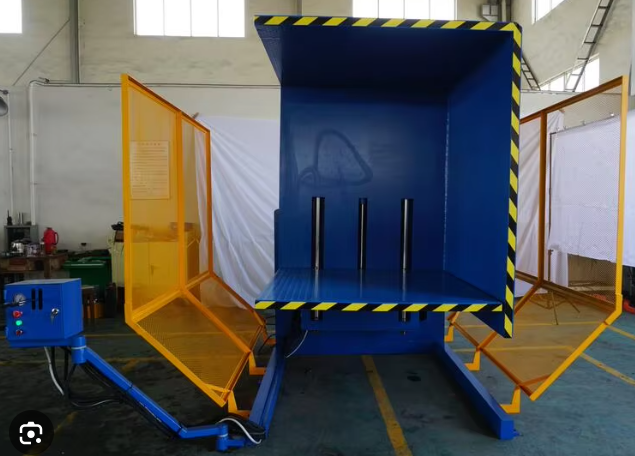
Deeper Dive: Matching the Machine to the Mission
As an engineer, I believe in using the right tool for the job. Not all pallet changers are created equal. For an environment like yours, we must prioritize safety and load integrity above all else. Let's compare the common technologies and see why the 180-degree inverter is the best fit for steel applications.
Comparison of Pallet Changing Technologies
| Machine Type | How It Works | Best For | Steel Mill Suitability |
|---|---|---|---|
| 180-Degree Pallet Inverter | Clamps the load, rotates it 180 degrees. The original pallet is now on top and can be removed. | Heavy, robust, or unstable loads (bags, pails, coils). | Excellent. The full clamping action provides the necessary security for heavy steel products. This is the industry standard for this application. |
| 90-Degree Tipper / Exchanger | Tilts the load 90 degrees, allowing it to rest on its side. The pallet is slid away and replaced. | Solid, stable, box-shaped loads that can withstand being tilted on their side. | Poor. Unstable loads like stacked coils or pipes would shift or collapse. Not recommended. |
| Pallet Exchanger (Push/Pull) | Pushes the load from the old pallet to a new pallet waiting adjacent to it. | Light, stable, and perfectly cubed loads. Common in food and pharma. | Very Poor. The pushing force would likely damage or destabilize heavy, non-uniform steel loads. High risk of failure. |
| Mobile Pallet Changer | A walk-behind or ride-on machine that grips the pallet and allows it to be removed. | Light loads (under 1000 kg) in environments where a fixed machine is not feasible. | Not Applicable. Lacks the capacity and stability for typical steel mill pallet loads. |
Critical Machine Features for the Steel Industry
When selecting a 180-degree pallet inverter for your mill, the specifications are critical. This is where a partnership with an experienced supplier becomes invaluable. Here are the features I always insist on for my clients in heavy industry:
- Robust C-Frame Construction: The machine frame must be made from heavy-gauge, welded steel to withstand the immense forces of clamping and rotating multi-ton loads day after day. A bolted frame is a point of weakness.
- Adjustable Clamping Pressure: This is non-negotiable. Too much pressure can crush your product or its packaging. Too little, and the load can shift during rotation. A system with a pressure gauge and adjustable relief valve allows you to set the perfect clamping force for different products.
- Extended Side Walls and Load Guards: For irregularly shaped or taller loads, extended walls and safety guards prevent any part of the product from tipping or falling out during the inversion.
- Automation and Integration-Ready Controls: The machine should come with a PLC that can be easily integrated with your existing systems. It should have options for automated conveyor infeed and outfeed to create a fully hands-off process.
- Comprehensive Safety Features: This includes safety light curtains at the entrance, physical guarding or fencing, and emergency-stop buttons that are easily accessible. Safety is paramount.
Choosing the right machine type and specifying these features ensures your investment is not only effective but also safe and durable for the long term, which I know is a top priority for you.
My Take: Beyond the Machine, It's About Building a Resilient Operation
I've been in this industry for a long time. I started on the factory floor, worked my way up as an engineer, and eventually built my own company, SHJLPACK. This journey has taught me a valuable lesson: the most successful companies don't just buy machines; they invest in better processes. A pallet changer isn't just a piece of equipment to replace muddy pallets. It's a strategic tool for creating operational resilience.
A pallet changing system is a physical firewall. It creates a hard stop between the uncontrolled "outside" world and your controlled "inside" manufacturing environment. This simple concept has profound effects on your entire operation, strengthening it against the volatility and pressures you face every day as a steel mill owner.
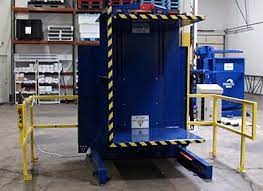
Deeper Dive: The Firewall Philosophy
The steel industry is cyclical. You face fluctuating demand, volatile energy costs, and constant pressure on margins. In this environment, the winners are the ones who control their internal processes with absolute precision. Wasted time, damaged product, and safety incidents are self-inflicted wounds you can't afford.
Insulating Your Operation from External Chaos
Think about the journey of your materials. They arrive from suppliers, from the yard, from transport trucks. They are exposed to rain, mud, and rough handling. The pallets they sit on are a direct vector for bringing that chaos into your plant.
- Quality Control: By swapping to a clean, standardized in-house pallet right at the receiving dock, you ensure that every load entering your production area meets a consistent standard. This is the first step in a quality-controlled process. It prevents rust-causing moisture and abrasive grit from ever reaching your finished products or sensitive machinery.
- Cost Containment: The "firewall" contains costs. You stop paying for damage caused by bad pallets. You stop paying for extensive cleanup crews. You reduce the risk of costly worker compensation claims from handling broken pallets. This directly addresses your challenges with cost pressures and helps you achieve that goal of an 8% reduction in operating costs.
- Process Stability: An automated firewall is a predictable one. It doesn't get tired. It doesn't have a bad day. It performs its function in the same amount of time, every time. This stability is the foundation upon which you can build higher-level systems like MES and smart scheduling. Without stable, repeatable processes at the ground level, your digitalization efforts will struggle to find a solid footing.
A Foundation for Future Growth
I achieved my success by helping clients like you solve these foundational problems. When we install a system like this, we are doing more than just solving the "muddy pallet" problem. We are giving the plant's management team a new level of control. We are removing a source of daily frustration and firefighting, freeing them up to focus on strategic goals like introducing new energy-saving technologies or expanding into new markets.
For an entrepreneur like yourself, Javier, who has built a massive operation from the ground up, I know you appreciate the power of strong foundations. Implementing a robust pallet changing process is one of the most effective ways to fortify your operational foundation, making your entire steel mill stronger, more efficient, and more profitable. It is a key step in building an enterprise that can thrive through the industry's cycles.
Conclusion
Investing in the right pallet changer is a fast track to cleaner operations, higher efficiency, and a stronger bottom line, solving a critical bottleneck with a clear ROI.




